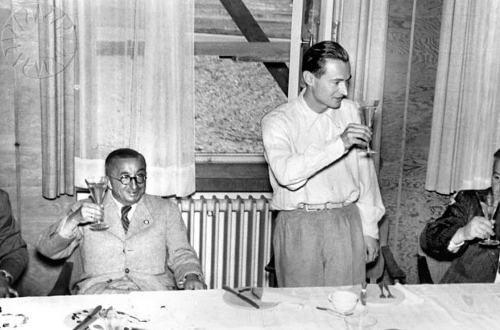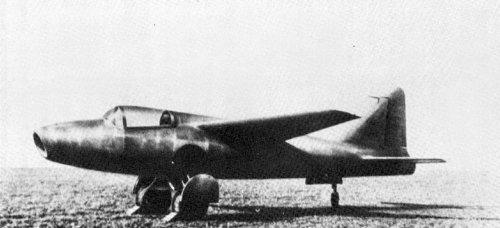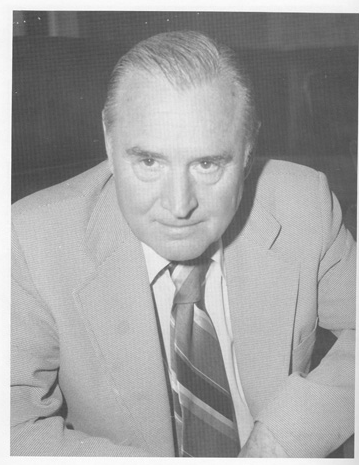Early Life – Death
Hans von Ohain was a native of the town of Dessau, Germany. He was born as Hans Joachim Pabst von Ohain in 1911.
After obtaining a Ph.D. in Physics and Aerodynamics, he worked on several engineering and aerospace projects.
Although none of his work ever went into production, his original designs were instrumental in the development and success of the jet-powered aircraft.
After years of working on his jet engine, Ohain received an offer from Operation Paperclip to relocate from Germany to the United States.
He was only 38 years old and began his career in the US at the Wright Patterson Air Force Base in Ohio.
Related Article – 12 Runway Markings and Signs Explained By An Actual Pilot
Later, he advanced to the role of Director of the Air Force Aeronautical Research Laboratory and before retiring served as the Chief Scientist of the Aero Propulsion Laboratory.
After retirement, he shared his knowledge with future scientists while working as an Associate Professor at the University of Dayton.
He died in 1998 at the age of 87. At the time of his death, he was married with four adult children.
College and Professional Training
Ohain completed his doctoral training at the prestigious University of Göttingen.
A think tank for scientific scholars, here Ohain studied and worked with many renowned physicists including Robert Wichard Pohl who is known worldwide for his research in solid-state physics.
The university served as a working laboratory for Hans von Ohain.
It was while he was a student that he envisioned an engine that could run “without a propeller”.
He’d later get a patent on his specific design which was different from other jet engine concepts.
Development Of The Jet Engine
In the mid-1930s while working as a Junior Assistant, he partnered with an automotive engineer (Max Hahn) to turn his prototype into a workable engine. Hahn worked at a garage that regularly serviced Ohain’s automobile.
The first attempt at making the model engine failed because of technical issues. Its main problem was its instability.
The design called for the fuel to burn in flame cans which were actually on the outer parts of the engine.
Related Article – 14 Taxiway Markings, Signs, and Lights Explained By An Actual Pilot
However, at times, the fuel would move from the flame cans and burn in other parts of the engine causing it to overheat. Still, Ohain did not give up.
Robert Pohl also believed in Ohain’s work and design concept.
To assist Ohain, he sought out Ernst Heinkel, a German Aircraft Designer and known member of the Nazi party.

Heinkel Jet Engine 1
Heinkel used his considerable power and influence to arrange a meeting with a team of engineers.
After a lengthy discussion and a battery of questions, they too were convinced that Ohain had designed a jet-powered motor that could really work.
Thus, they provided a place for him to work on his model engine at the Marienehe Airfield near Rostock, Germany. In this space, he was able to thrive.
The result was a new model engine that ran on hydrogen gas.
Hopeful that they had a winning design, his team went to work to build the new and improved version of the engine.
Along with the engineers, they contracted highly-skilled machinists to complete the job.
The design was not complicated, so construction took less than a year and they were finished with it in early 1937.
It was referred to as the Heinkel Jet Engine 1 (named for Ernst Heinkel).
Although the Heinkel Jet Engine 1 seemed a success, after just a couple of weeks, the engine became weak because of burning in several spots.
Continuing to improve on the model, they tried running it on gasoline instead of hydrogen gas.
Related Article – 5 Best Low Time Pilot Jobs With 250 Hours
However, this also proved to be unsuccessful because when running on gasoline, the engine seemed to get clogged and thus did not operate efficiently.
After going back to the drawing board, Hahn (the automotive engineer) was successful in getting the engine to function properly.
Although not flight-ready, it proved that the design had lots of promise.
Heinkel Jet Engine 3
Ohain and the team of engineers continued to improve on the Heinkel Jet Engine 1 while beginning the production of one that they thought could potentially be used in flight.
Known as the Heinkel Jet Engine 3, it was configured slightly different.
Some of its major differences included relocating the flame cans and using a stronger material than folded sheet metal.
A larger turbine was also planned which lead to more modifications to the flame cans and their positioning.
Now, they’d come up with the Heinkel Jet Engine 3(b), a lightweight jet engine with good combustion stability.
The Heinkel Jet Engine 3(b) was actually tested in the Spring/Summer of 1939.
While still in testing status, the team continued to improve on the original design and also crafted the Heinkel HE 118 and the Heinkel HE 178 which was the first jet aircraft to take flight.

Many more designs were to come from the original motor engine prototype, but funds were needed.
In the meantime, the team went to work on building a larger engine known as the HeS6.
The HeS8 and the Heinkel HE 280 soon followed. With the HeS8, the engineers reconfigured the entire engine housing the compressor and turbine in two separate compartments.
This proved highly successful and the engine was installed on an aircraft that flew on April 2, 1939.
Related Article – Instrument Proficiency Check (IPC): 4 Things You Need To Know
Soon following, the Nazi and RLM Officials invested a large sum of money in the project.
In the meantime, competition was building and BMW was making considerable progress on their turbojet engine.
Another engineer, Adolph Müller who worked for Junkers Motor Company, was also getting noticed for his work on an axial compressed-powered design.
Knowing that he could help the project, Heinkel quickly recruited Müller to join forces with him to create the Heinkel HeS30.
Still, BMW seemed much further ahead which discouraged future investments in the Heinkel jet engines.
Thus, Heinkel had to move on to a less costly project, the Heinkel HeS011 (a class 2 engine).
Soon after production stopped on the Heinkel HeS8, Ohain moved to the United States where he began his career with the United States government.
Having made a huge contribution to aeronautical engineering, Ohain was recognized by his peers with various awards.
This includes the Charles Stark Draper Prize for his turbojet engine. While in the United States, he was also honored with the AIAA’s Goddard Award, the U.S. Air Force Exceptional Civilian Service Award, the Air Force Special Achievement Award, and the Citation Award.
A noted German inventor and leader in his field, Ohain’s contributions will forever be remembered.
In 1982, he was named among the top scientist in the world when he inducted in the International Air & Space Hall of Fame.

